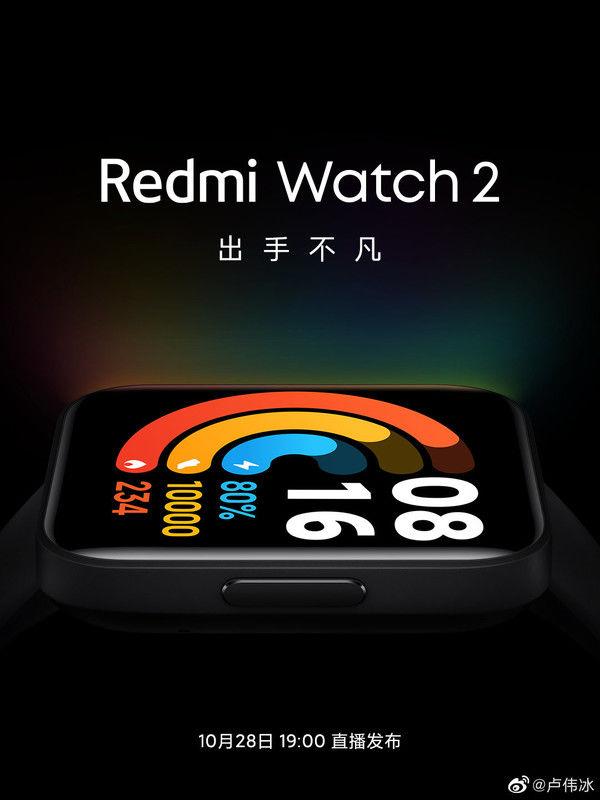гҖҗAndroidи¶…ж—¶жңәеҲ¶зҡ„еӨ„зҗҶпјҲеҫҲдёҚй”ҷпјүгҖ‘й«ҳж–Ӣжҷ“ејҖеҚ·пјҢзӢ¬е…ұеңЈдәәиҜӯгҖӮиҝҷзҜҮж–Үз« дё»иҰҒи®Іиҝ°Androidи¶…ж—¶жңәеҲ¶зҡ„еӨ„зҗҶпјҲеҫҲдёҚй”ҷпјүзӣёе…ізҡ„зҹҘиҜҶпјҢеёҢжңӣиғҪдёәдҪ жҸҗдҫӣеё®еҠ©гҖӮ
з”ұдәҺжүӢжңәз«Ҝеә”з”Ёзҡ„е“Қеә”пјҢдёҺеҪ“ж—¶зҡ„ж— зәҝйҖҡдҝЎзҪ‘з»ңзҠ¶еҶөжңүеҫҲеӨ§зҡ„е…іиҒ”гҖӮиҖҢйҖҡдҝЎзҪ‘з»ңеҫҖеҫҖе…·жңүдёҚзЁіе®ҡпјҢ延иҝҹй•ҝзҡ„зү№зӮ№гҖӮжүҖд»ҘпјҢеңЁжҲ‘们зҡ„еә”з”ЁзЁӢеәҸдёӯпјҢеҪ“жҲ‘们иҜ·жұӮзҪ‘з»ңзҡ„ж—¶еҖҷпјҢи¶…ж—¶жңәеҲ¶зҡ„еә”з”Ёе°ұжҳҫеҫ—зү№еҲ«йҮҚиҰҒгҖӮ
и¶…ж—¶жңәеҲ¶дё»иҰҒжңүпјҡ
1гҖҒHTTPиҜ·жұӮи¶…ж—¶жңәеҲ¶
2гҖҒSocketйҖҡдҝЎи¶…ж—¶жңәеҲ¶
HTTPиҜ·жұӮи¶…ж—¶жңәеҲ¶
public static void main(String[] args){long a=System.currentTimeMillis();
try{
URL myurl = new URL(“
http://www.baidu.cn”
);
URLConnection myurlcon = myurl.openConnection();
myurlcon.setConnectTimeout(1000);
myurlcon.setReadTimeout(1000);
BufferedReader in = new BufferedReader(new InputStreamReader(myurlcon.getInputStream(),”
UTF-8″
));
String inputLine;
while ((inputLine = in.readLine()) != null){
System.out.println(inputLine);
in.close();
System.out.println(System.currentTimeMillis()-a);
}
} catch (MalformedURLException e) {
e.printStackTrace();
} catch (UnsupportedEncodingException e) {
e.printStackTrace();
} catch (IOException e) {
e.printStackTrace();
}}еҰӮжһңи¶…ж—¶ е°Ҷ жҠӣеҮә д»ҘдёӢ ејӮеёё
иҝҷйҮҢиҝҳжңүдёҖзҜҮж–Үз« и®Ізҡ„д№ҹжҜ”иҫғеҘҪпјҡ
еңЁandroidйЎ№зӣ®дёӯпјҢеҰӮжһңжңүз”ЁеҲ°httpиҜ·жұӮпјҢе°ұеҝ…йЎ»д№ҹеә”иҜҘеҠ дёҠhttpиҜ·жұӮзҡ„и¶…ж—¶з®ЎзҗҶпјҢејӮеёёз®ЎзҗҶпјҢйЎ№зӣ®дёӯйҒҮеҲ°иҝҷдёӘйңҖжұӮпјҢgoogleдёҠжҗңзҙўеҲ°дәҶдёҖ еӨ§е ҶпјҢдҪҶжҳҜеҶҷзҡ„йғҪжҜ”иҫғз®ҖеҚ•пјҢеҒҡдёӘdemoиҝҳиЎҢпјҢз”ЁеңЁйЎ№зӣ®дёӯиҝҳжҳҜдёҚеӨҹе®Ңе–„гҖӮиҮӘе·ұеҶҷдәҶдёҖдёӘдҫӢеӯҗпјҢжңүдёҚе®Ңе–„д№ӢеӨ„пјҢж¬ўиҝҺеӨ§е®¶жҢҮжӯЈгҖӮ
йңҖиҰҒжіЁж„Ҹзҡ„ең°ж–№пјҡжңүдёүдёӘж–№йқў
еҰӮдҪ•жҺ§еҲ¶и¶…ж—¶жңәеҲ¶
еҰӮдҪ•еӨ„зҗҶејӮеёё
еҰӮдҪ•еӨ„зҗҶиҜ·жұӮй”ҷиҜҜзҡ„
private class XmlAsyncLoader extends XmlResourceRequest {private boolean mIsCancle = false;
private HttpGet mGet;
private HttpClient mHttp;
public XmlAsyncLoader(MxActivity<
?>
activity, String url)
throws MalformedURLException {
super(activity, url);
}@Override
protected void doTaskInBackground() {
// иҜ·жұӮж•°жҚ®
if (mUrl.toLowerCase().startsWith("http://")) {
mGet= initHttpGet(mUrl);
mHttp = initHttp();
try {
HttpResponse response = mHttp.execute(mGet);
if (mIsCancle) {
return;
}
if (response != null) {
if(response.getStatusLine().getStatusCode()!=HttpStatus.SC_OK){
onResponseError("network error");
Log.v(TAG, "the code is :"+response.getStatusLine().getStatusCode());
return;
}
notifyUpdateProgress(70);
Document doc = getDocumet(response);
Element root = doc.getDocumentElement();
NodeList appList = root
.getElementsByTagName(Item_ELEMENT_NAME);
final int len = appList.getLength();
if (len <
= 0) {// жІЎжңүitems
onFoundNoItems();
return;
}
for (int i = 0;
i <
len;
i++) {
Element item = (Element) appList.item(i);
if (item.getNodeType() == Node.ELEMENT_NODE) {
HahaItemInfo info = createHahaItemIno(item);
if (mIsCancle){
return;
}
onFoundItem(info, 80 + 20 * (i + 1) / len);
addUrlToQueue(info.userIconUrl);
}
};
}
}catch(ConnectTimeoutException e){
onResponseError("time out");
} catch (ClientProtocolException e) {
--mCurrentPage;
e.printStackTrace();
} catch (IOException e) {
--mCurrentPage;
e.printStackTrace();
} catch (XmlPullParserException e) {
--mCurrentPage;
e.printStackTrace();
}finally{
notifyLoadFinish();
notifyLoadImages();
mHttp.getConnectionManager().shutdown();
}}
}private HttpClient initHttp() {
HttpClient client= new DefaultHttpClient();
client.getParams().setIntParameter(
HttpConnectionParams.SO_TIMEOUT, TIME_OUT_DELAY);
// и¶…ж—¶и®ҫзҪ®
client.getParams().setIntParameter(
HttpConnectionParams.CONNECTION_TIMEOUT, TIME_OUT_DELAY);
// иҝһжҺҘи¶…ж—¶
return client;
}private HttpGet initHttpGet(String mUrl) {
HttpGet get = new HttpGet(mUrl);
initHeader(get);
return get;
}@Override
public boolean tryCancel() {
Log.i(TAG, "tryCanle is working");
mGet.abort();
mIsCancle = true;
mHttp.getConnectionManager().shutdown();
notifyLoadFinish();
return true;
}}иҝҷжҳҜдёҖдёӘејӮжӯҘд»»еҠЎзұ»пјҢеҸ‘йҖҒgetиҜ·жұӮиҜ·жұӮж•°жҚ®пјҢи§ЈжһҗжңҚеҠЎеҷЁзҡ„е“Қеә”ж•°жҚ®пјҢеҗҢж—¶йҖҡзҹҘuiзәҝзЁӢжӣҙж–°ui
еңЁandroidдёӯпјҢдә’иҒ”зҪ‘дәӨдә’зҡ„еҶҷжі•жңүеҫҲеӨҡпјҢеҸҜд»ҘдҪҝз”ЁapacheжҸҗдҫӣзҡ„еҢ…пјҢд№ҹеҸҜд»ҘдҪҝз”ЁgoogleжҸҗдҫӣзҡ„apiпјҢжҲ‘дёҚзҹҘйҒ“йӮЈз§ҚжӣҙеҘҪпјҢеҸӘжҳҜд№ жғҜдәҺдҪҝз”Ё
apacheзҡ„apiгҖӮ
1. и®ҫзҪ®и¶…ж—¶жңәеҲ¶
client.getParams().setIntParameter( HttpConnectionParams.SO_TIMEOUT, TIME_OUT_DELAY); // и¶…ж—¶и®ҫзҪ® client.getParams().setIntParameter( HttpConnectionParams.CONNECTION_TIMEOUT, TIME_OUT_DELAY); // иҝһжҺҘи¶…ж—¶иҝҷйҮҢи®ҫзҪ®дәҶдёӨз§Қи¶…ж—¶пјҢ第дёҖз§ҚжҳҜиҜ·жұӮи¶…ж—¶пјҢ第дәҢз§Қж—¶иҝһжҺҘи¶…ж—¶гҖӮ
еҪ“еҗ‘жңҚеҠЎеҷЁеҸ‘еҮәиҜ·жұӮеҗҺпјҢиҜ·жұӮе’ҢжңҚеҠЎеҷЁе»әз«ӢsocketиҝһжҺҘпјҢдҪҶжҳҜеҫҲй•ҝж—¶й—ҙеҶ…йғҪжІЎжңүе»әз«ӢsocketиҝһжҺҘпјҢиҝҷе°ұ时第дёҖз§ҚиҜ·жұӮи¶…ж—¶пјҢиҝҷз§Қжғ…еҶөдё»иҰҒеҸ‘з”ҹеңЁиҜ·жұӮдәҶ
дёҖдёӘдёҚеӯҳеңЁзҡ„жңҚеҠЎеҷЁгҖӮи¶…ж—¶д№ӢеҗҺпјҢдјҡжҠӣеҮәInterruptedIOExceptionејӮеёёгҖӮ
Timeout for blocking operations. The argument value is specified in
milliseconds. An InterruptedIOException is thrown if this timeout
expires.
е®ўжҲ·з«Ҝе·Із»ҸдёҺжңҚеҠЎеҷЁе»әз«ӢдәҶsocketиҝһжҺҘпјҢдҪҶжҳҜжңҚеҠЎеҷЁе№¶жІЎжңүеӨ„зҗҶе®ўжҲ·з«Ҝзҡ„иҜ·жұӮпјҢжІЎжңүзӣёеә”жңҚеҠЎеҷЁпјҢиҝҷе°ұжҳҜ第дәҢз§ҚиҝһжҺҘи¶…ж—¶гҖӮиҝҷдёӯи¶…ж—¶дјҡжҠӣеҮә
ConnectTimeoutExceptionејӮеёёпјҢConnectTimeoutException继жүҝиҮӘInterruptedIOExceptionпјҢжүҖд»ҘеҸӘиҰҒжҚ•иҺ·ConnectTimeoutException е°ұеҸҜд»ҘдәҶгҖӮ
2. еҲҶжһҗдёҖдёӢиҜ·жұӮзҡ„иҝҮзЁӢ
гҖҖ2.1гҖҖHttpResponse response = mHttp.execute(mGet);
жү§иЎҢиҜ·жұӮж–№жі•пјҢиҺ·еҸ–жңҚеҠЎеҷЁе“Қеә”пјҢпјҲиҝҷйҮҢжңүдёӘдёҚеӨӘжҲҗзҶҹзҡ„зңӢжі•пјҢresponseдёҚеҸҜиғҪдёәnullпјҢиҝҳжңүеҫ…йӘҢиҜҒпјүгҖӮ
2.2 иҺ·еҸ–иҜ·жұӮе“Қеә”з Ғ
if(response.getStatusLine().getStatusCode()!=HttpStatus.SC_OK){ onResponseError("network error"); Log.v(TAG, "the code is :"+response.getStatusLine().getStatusCode()); return; }
еҚідҪҝиҝһжҺҘдёҠжңҚеҠЎеҷЁпјҢ并且д»ҺжңҚеҠЎеҷЁдёҠиҺ·еҸ–дәҶж•°жҚ®пјҢд№ҹжңүеҸҜиғҪж—¶жңҚеҠЎеҷЁиҝ”еӣһзҡ„й”ҷиҜҜдҝЎжҒҜпјҢеӣ жӯӨд№ҹйңҖиҰҒзү№ж®ҠеӨ„зҗҶгҖӮ
2.3 ејӮеёёеӨ„зҗҶ
еҜ№дәҺејӮеёёпјҢдёҚиғҪз®ҖеҚ•зҡ„жҚ•иҺ·е°ұе®ҢдәӢпјҢдҫӢеҰӮдёҠйқўзҡ„д»Јз ҒдёӯпјҢжҲ‘иҜ·жұӮ第дёүйЎөзҡ„ж•°жҚ®пјҢеҰӮжһңеҸ‘з”ҹејӮеёёпјҢиҜ·жұӮдёҚжҲҗеҠҹпјҢйӮЈд№ҲжҲ‘е°ұйңҖиҰҒи®©еҪ“еүҚйЎөж•°еӣһж»ҡпјҢ
еҰӮжһңжҲҗеҠҹдәҶе°ұдёҚз”Ёеӣһж»ҡдәҶпјҢжүҖд»ҘйңҖиҰҒеҜ№ејӮеёёиҝӣиЎҢеӨ„зҗҶ
2.4 finallyе…ій”®еӯ—
дёҚз®ЎжҳҜиҜ·жұӮжҲҗеҠҹпјҢиҝҳжҳҜеӨұиҙҘпјҢйғҪйңҖиҰҒе…ій—ӯй“ҫжҺҘгҖӮ
иҪ¬иҪҪиҮӘLiudroidзҡ„еҚҡе®ў
еҶҚеҲҶдә«дёҖдёӢжҲ‘иҖҒеёҲеӨ§зҘһзҡ„дәәе·ҘжҷәиғҪж•ҷзЁӢеҗ§гҖӮйӣ¶еҹәзЎҖпјҒйҖҡдҝ—жҳ“жҮӮпјҒйЈҺи¶Је№Ҫй»ҳпјҒиҝҳеёҰй»„ж®өеӯҗпјҒеёҢжңӣдҪ д№ҹеҠ е…ҘеҲ°жҲ‘们дәәе·ҘжҷәиғҪзҡ„йҳҹдјҚдёӯжқҘпјҒhttp://www.captainbed.net
жҺЁиҚҗйҳ…иҜ»
- Android Intentдј йҖ’еҜ№иұЎдёәд»Җд№ҲиҰҒеәҸеҲ—еҢ–пјҲпјү
- Appscannerе®һйӘҢиҝҳеҺҹcode3
- еҫ®жңҚеҠЎд№Ӣspringboot иҮӘе®ҡд№үй…ҚзҪ®Application.propertiesж–Ү件
- Androidиө„жәҗ收йӣҶ
- EF Core зӣёе…ізҡ„еҚғеҖҚжҖ§иғҪд№Ӣе·®пјҲ AutoMapper ProjectTo VS Mapster ProjectToTypeпјү
- е®үеҚ“йқўз»Ҹ
- 04_пјҲз»Ҳз»“зүҲпјүйҖҡиҝҮAppе®һзҺ°еҜ№ж•°жҚ®еә“зҡ„еўһеҲ ж”№
- Apple IDеҸҢйҮҚи®ӨиҜҒпјҢйӘҢиҜҒз Ғж— жі•иҫ“е…Ҙй—®йўҳ
- Xamarin.Android еҲ¶дҪңжҗңзҙўжЎҶ











